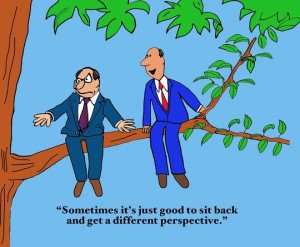Shellye Archambeau, December 08, 2014
Shellye Archambeau
In my last two articles, I explored the top risks and opportunities that startups face during their first five years of existence. In this conclusion to the series, I’d like to discuss the final phase of startup growth—Year 5 and up.
If your business has made it to the crucial 5-year mark, that’s a good sign. It means that the market is interested in what you have to offer, and that your startup has the potential to generate sustainable growth. However, there are still some key risks—and opportunities—to be mindful of as you embark on the next phase of your business. Being aware of them can make all the difference.
Cash Risk: Are You Managing Your Cash Flow Wisely?
In a heartfelt post-mortem analysis of his startup, Ben Yoskovitz confessed that one of the reasons his business, Standout Jobs, didn’t take off as it should have was because it raised too much money too early. And while that did boost their confidence, it also “set us on a path of building a bigger product than we should have, and committing (falsely) to our own assumptions of what would work, without fully testing them.”
Later, when the business needed more capital, it was difficult to come by. “While we raised too much, too early, we also weren’t in a position to raise a lot more, later when it would have made more sense,” rued Ben.
Cash risks such as these exist at almost every stage of a business. In the initial few months, your startup may be flush with funding. But by Year 5, it’s vital to start generating a steady source of revenue, however small. You can’t depend on venture capitalists forever.
It’s also time to take stock of your expenses. Have they stabilized in the last five years? Top investors recently expressed concerns that startups are over-spending on flashy offices and excessive hiring sprees. Meanwhile, some are building extravagant marketing campaigns that fail to justify the investment. Others are spending the bulk of their resources on unnecessary product enhancements.
Be judicious about your finances. In the next few years, you will probably need to scale up your operations, attract more customers, hire more employees, and add new infrastructure. Will you be able to balance out these expenses? The time to answer these questions is now.
Market Risk: Are You Staying in Sync with the Market as It Evolves?
In the 1970s, two college dropouts joined hands to build a smart computer. Today, that multi-billion dollar company, Apple, has not only redefined the field of computing, but also revolutionized the music and smartphone industries with its iPods, iTunes, and iPhones.
Another top brand, Google, began as a search engine. And while that still remains a core business focus, the company is now developing self-driving cars and smart eyewear, in addition to multiple other cutting-edge technologies.
Both Apple and Google aren’t afraid to evolve—and that’s why they consistently rank among the best.
Like it or not, markets are changing faster than ever. And competitors are innovating at top speed. If you don’t evolve at the same pace, you might get left behind. So, take the time to evaluate your relevance in the market. Do you think there will still be a need for your product or service in the next 5-10 years? If not, what is your game plan?
At MetricStream, we started off by producing quality and compliance management solutions—critical for businesses in the early 2000s. But the market soon changed—the number of regulations rapidly increased, and risks became more complex and intertwined. So, we moved beyond our initial offerings, and developed a broad platform that could be used to manage all risk, compliance, and governance requirements.
The key is to stay current and relevant. Keep a close watch on your competitors. What direction are they innovating in? What new products or services are they offering? How can you stay ahead of them?
Also critical, listen to your customers. Track social media conversations around your brand. What are people saying about your product or service? Provide community forums to encourage customer feedback and input. Incorporate their feedback.
And finally, examine your business model. Do you have predictable revenue? Or is it ad hoc and hard to forecast? Do you have a steady stream of clients? Or are you still waiting for the next big customer order? If so, it might be time to redesign your business strategy.
Execution Risk: Are You Successfully Implementing Your Business Model, and Can You Scale Up Effectively?
Startups experiment with different business models. Dropbox offers freemium pricing. Oyster takes a $ 9.95 monthly subscription fee for access to half a million books online. Snapchat runs ads. Other startups offer product licenses.
There are many ways to generate revenue. So, determine which business model works for your company and is sustainable in the long run. Only then, think about scaling up.
As you begin to broaden your impact in the market, here are a few questions: Do you have the funds and market traction to expand your business? How do you plan to scale up, selling direct? Leveraging channels? Mass marketing? Are you hiring the right talent? Are you paying attention to the company culture? And as more people come in to the organization, are you implementing standardized processes, policies, and procedures? In a small startup, it’s fairly easy to manage people. But as the team grows, you will probably need to put proper processes in place to avoid chaos and inefficiencies.
Also, as you scale up, keep your mission and values at the core of whatever you do. Let them guide every choice that your business makes. For instance, if one of your objectives is to maintain an open and communicative corporate culture, then make sure that as your team grows, there are no rigid reporting hierarchies, and that employees feel free to approach the management team with their issues and concerns.
Sustaining Growth
Once you make it past Year 5 with a stable business model and a steady source of revenue, it can be safely said that you’re moving out of startup mode and becoming an established business. A new set of risks—and rewards—await you. And there will continue to be a need for evolution and growth. What matters is how well you respond. Good luck on this next phase of your journey!
(457)
Report Post








